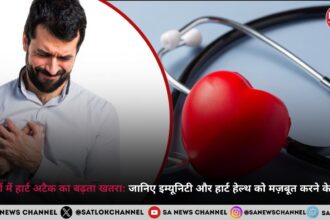With the advancement of the country in terms of technology and economic development, a terrible health crisis is still lurking in the shadows. Diarrhoea has become the third cause of death among children under the age of five in India and is killing these little babies every day. The most tragic part about it is that it is both preventable and treatable.
A Persistent Threat in the 21st Century
Diarrhoea-related complications were presumed to kill thousands of children under five years of age each year in India, although child health specialists are uncertain. The main reasons are so basic and utterly shocking: lack of safe drinking water, poor sanitation, inadequate hygienic practices and delayed treatments.
To these families in rural or even poor urban areas, guaranteeing clean water is a big ask. Children will drink from unprotected sources that can be contaminated with bacteria, viruses, and parasites. This in conjunction with malnutrition that further impairs the immune system creates a grim situation.
Why This Crisis Shouldn’t Exist
Every child must be protected against diarrhoea. Medical professionals know that this is among the easiest illnesses to prevent in children. The main complication that can arise is dehydration, which can easily be treated with Oral Rehydration Solution (ORS) and zinc supplements. Simple treatments like these are cheap and accessible in any part of the world but lack of awareness has prevented many families from seeking treatment.
Vaccination against rotavirus, one of the main causes of severe diarrhoea in children, is yet one more proven measure, already included in the Universal Immunization Programme in India. A host of other barriers like correct handwashing with soap, food handling, and safe drinking water can drastically reduce cases.
“Every child who dies from diarrhoea is a reminder that we failed to act on something we could have prevented,” says one of the pediatricians. “We are not talking about expensive surgeries or advanced drugs, we are talking about clean water, good hygiene, and timely rehydration.”
Government and NGO Efforts
The Indian government, along with NGOs and global health organizations, has been working to address the issue through initiatives like:
- Intensified Diarrhoea Control Fortnight (IDCF) – aimed at distributing ORS and zinc, and educating parents about diarrhoea prevention and treatment.
- Swachh Bharat Mission – focusing on building toilets and reducing open defecation.
- National Rural Drinking Water Programme – improving water supply infrastructure in underserved areas.
While these programs have made progress, experts warn that gaps in last-mile delivery remain. In some regions, families still do not have easy access to ORS packets or rotavirus vaccines, and myths about treatment persist.
Role of Parents and Communities
Diarrhoea prevention is crucial at the household level. Parents and caregivers must instantly recognize early warning signs, such as very watery stool, dry mouth, excessive thirst, sunken eyes, and unusual tiredness, and respond. Consider the presence of ORS whenever a child starts to have diarrhoea; it could literally be a matter of life and death.
At the community level, they ensure that the water sources are kept clean and protected while simultaneously promoting hygienic behaviors such as hand washing before meals and after using the toilet. Schools or the local health staff become strong agencies for disseminating this knowledge.
Breaking the Myths
Imposing food and fluid restrictions on a child with diarrhoea is one of the most damaging beliefs. Fluids are, in fact, needed to prevent dehydration. ORS must be given without interruption, and breastfeeding should never stop while the child is a baby. Soft, easily digestible food helps the child recover faster.
A Collective Responsibility
India has the knowledge, tools, and resources to make deaths due to diarrhoea in children a thing of the past. However, it has to be followed through community participation, access to safe water and sanitation, and periodic sustained public information campaigns.
A death from diarrhoea is not just a statistic; it’s a story of a life that could have been saved with something as simple as a packet of ORS and clean water.
According to health professionals: Diarrhoea can be prevented. Diarrhoea can be treated. And no child in India has to die from diarrhoea in 2025. The combined operation of government, the community, and individuals will lead India to create a healthy future for her children.
FAQs about Diarrhoea the third leading cause of death
1. What is the third leading cause of death among children under five in India?
Ans: Diarrhoea.
2. What is the main complication of diarrhoea that can be fatal in children?
Ans: Dehydration.
3. Name one key government initiative aimed at diarrhoea prevention and treatment in India.
Ans: Intensified Diarrhoea Control Fortnight (IDCF).
4. Which vaccine is included in India’s Universal Immunization Programme to prevent severe diarrhoea?
Ans: Rotavirus vaccine.
5. What simple treatment can save a child’s life during diarrhoea?
Ans: Oral Rehydration Solution (ORS) and zinc supplements.







